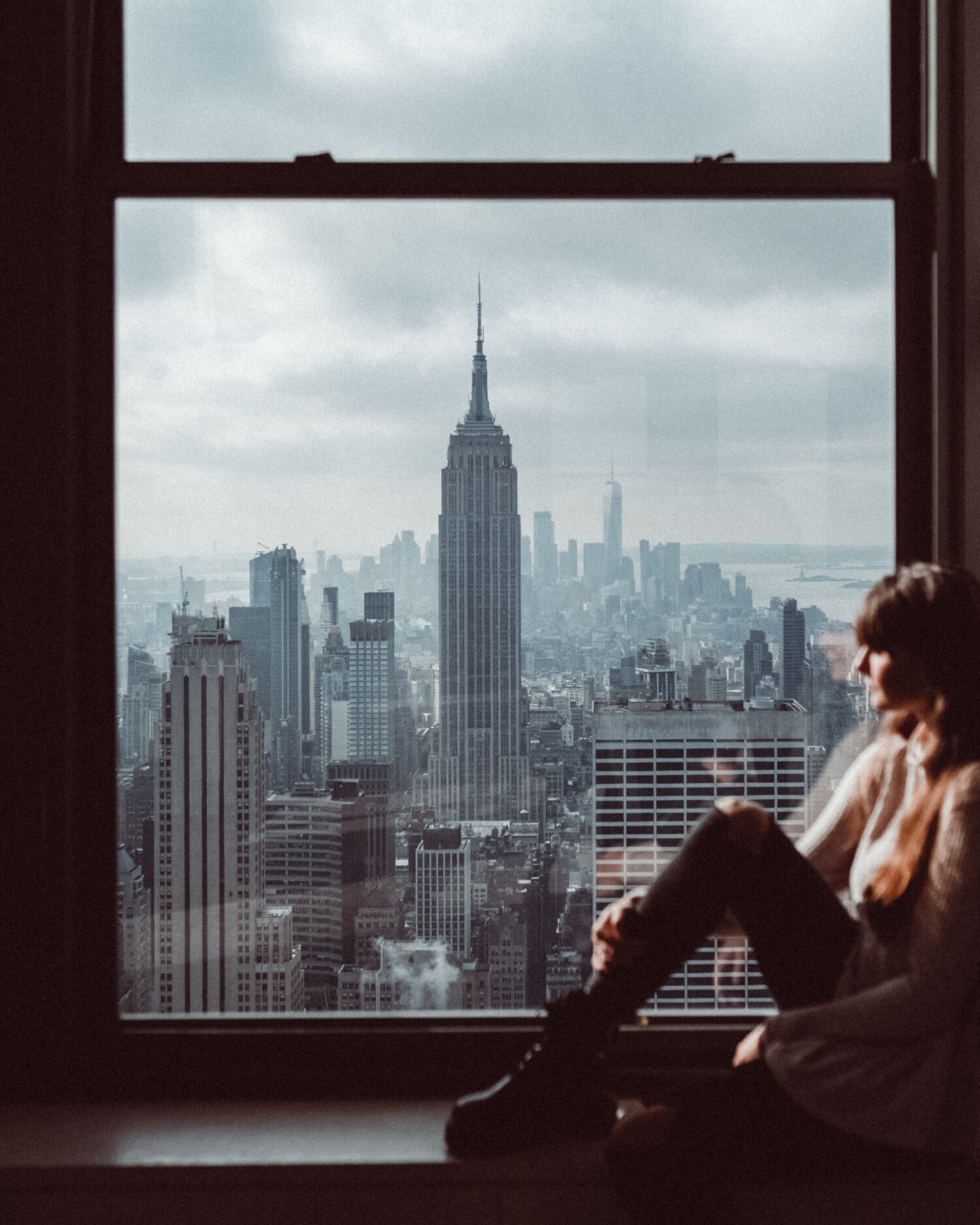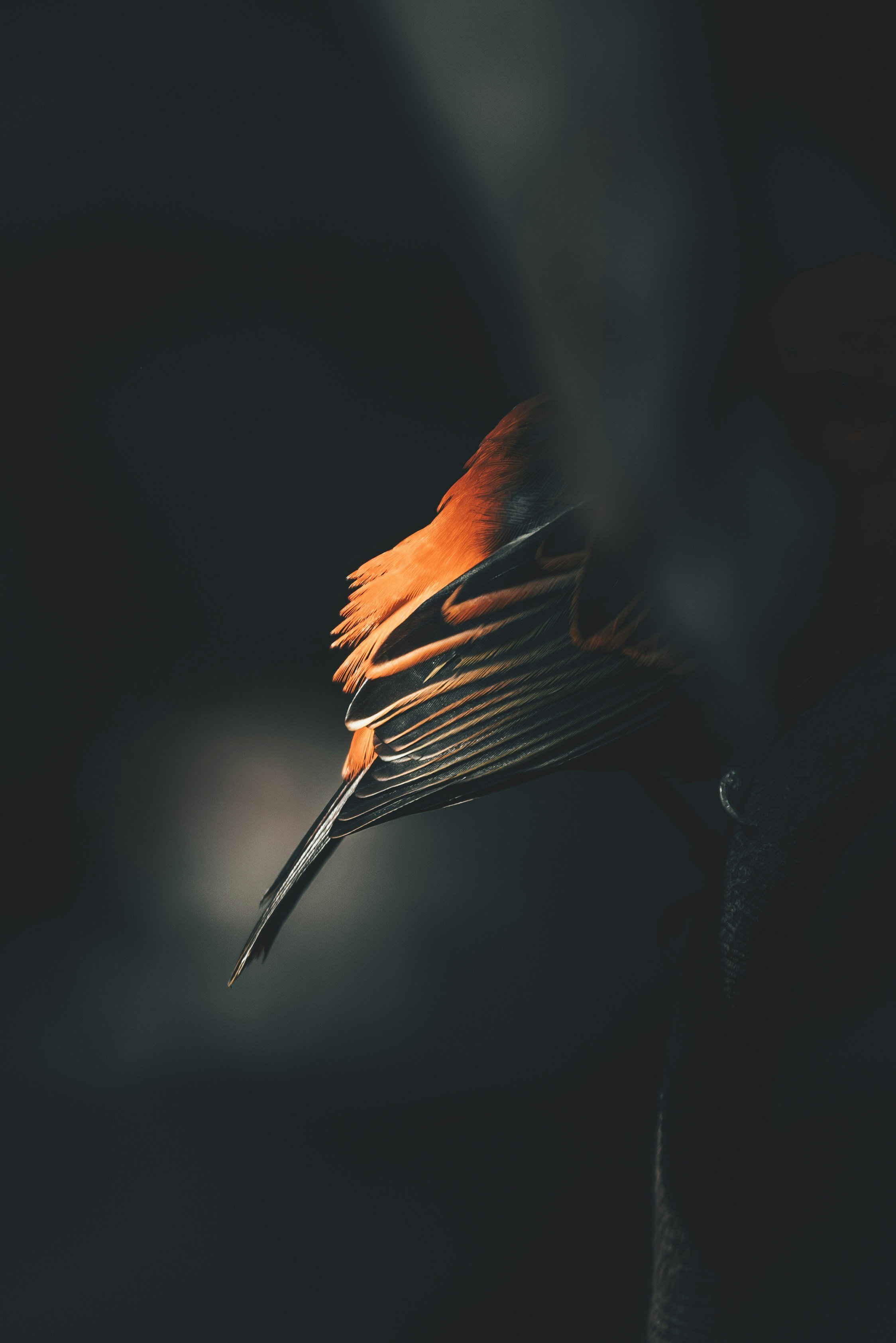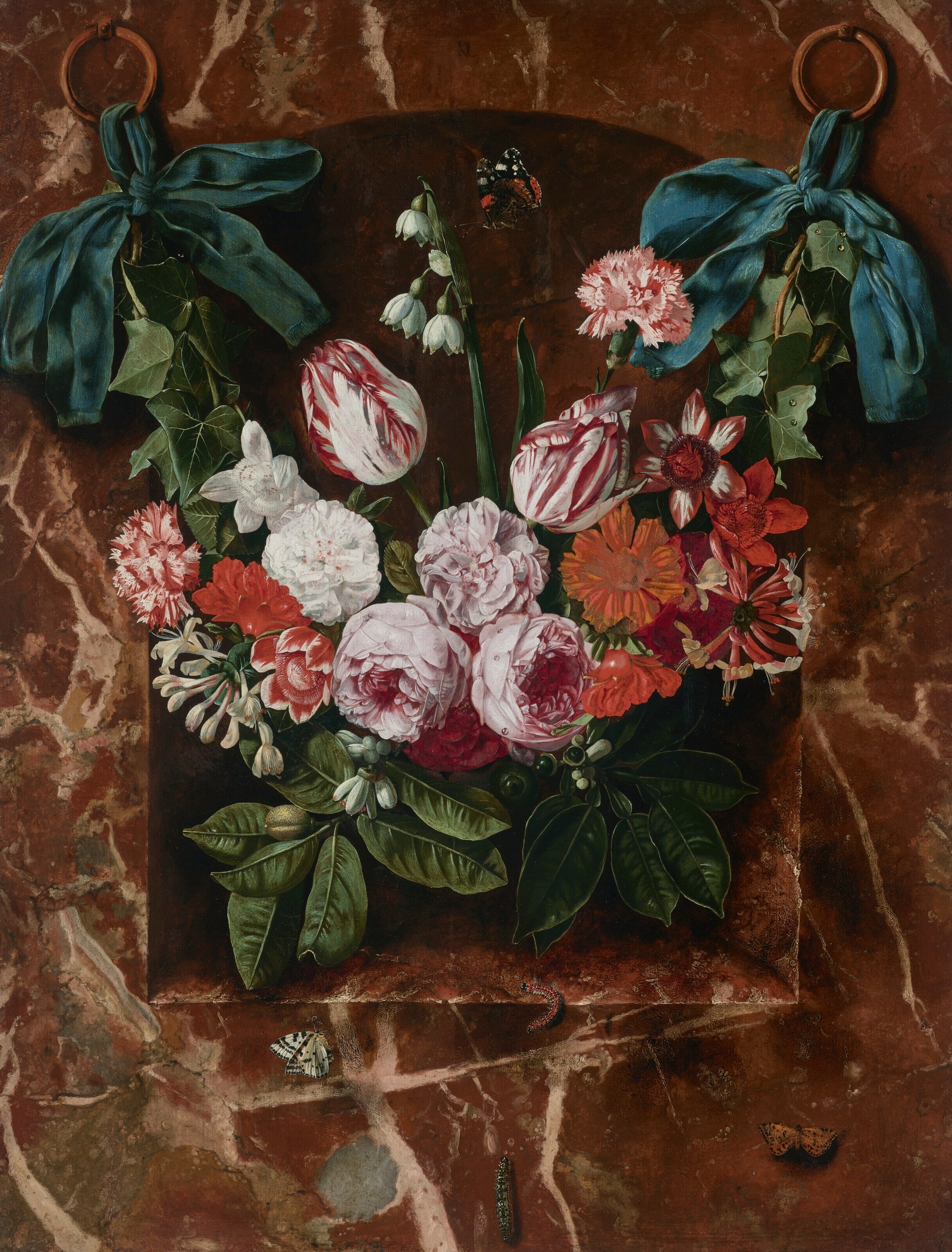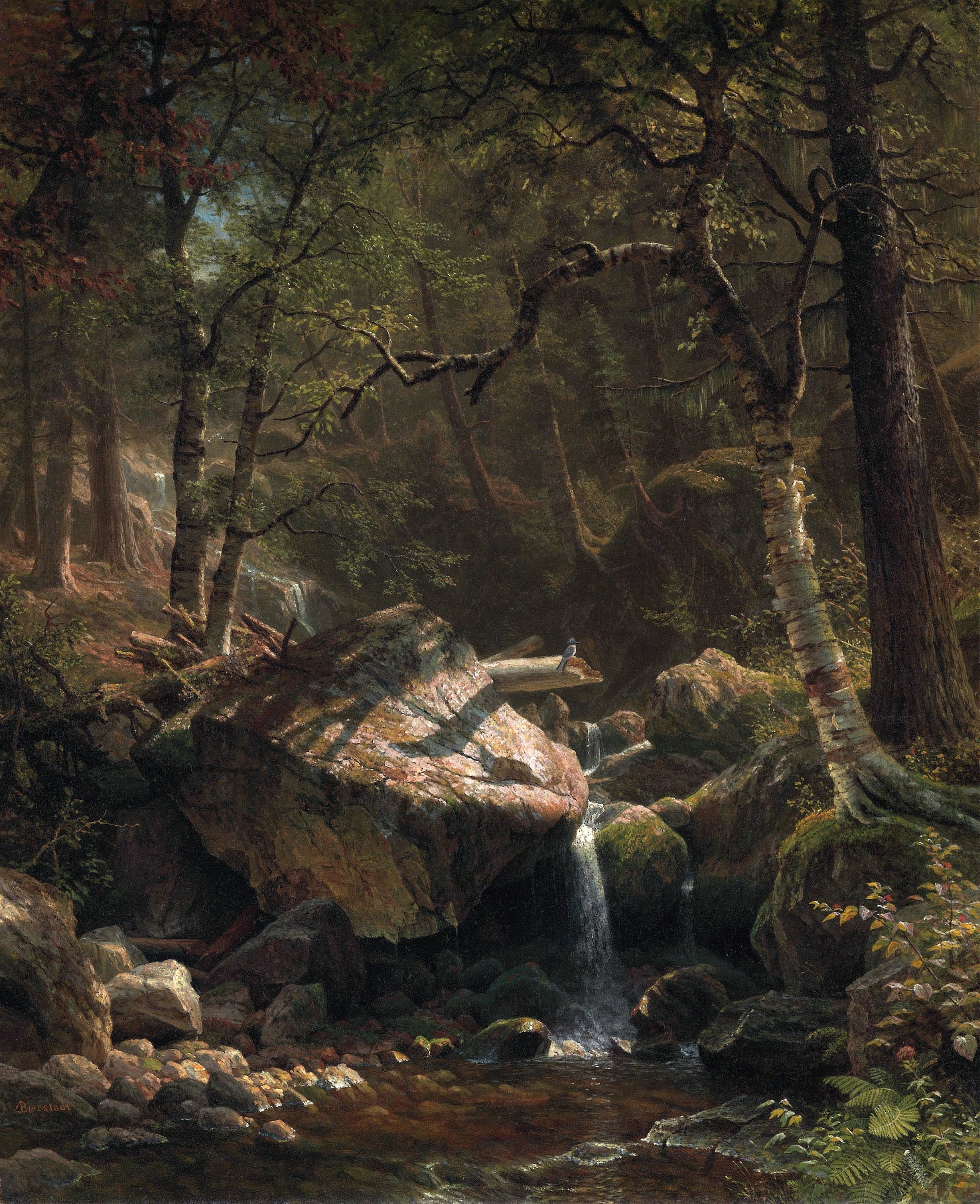Necessary Secrecy
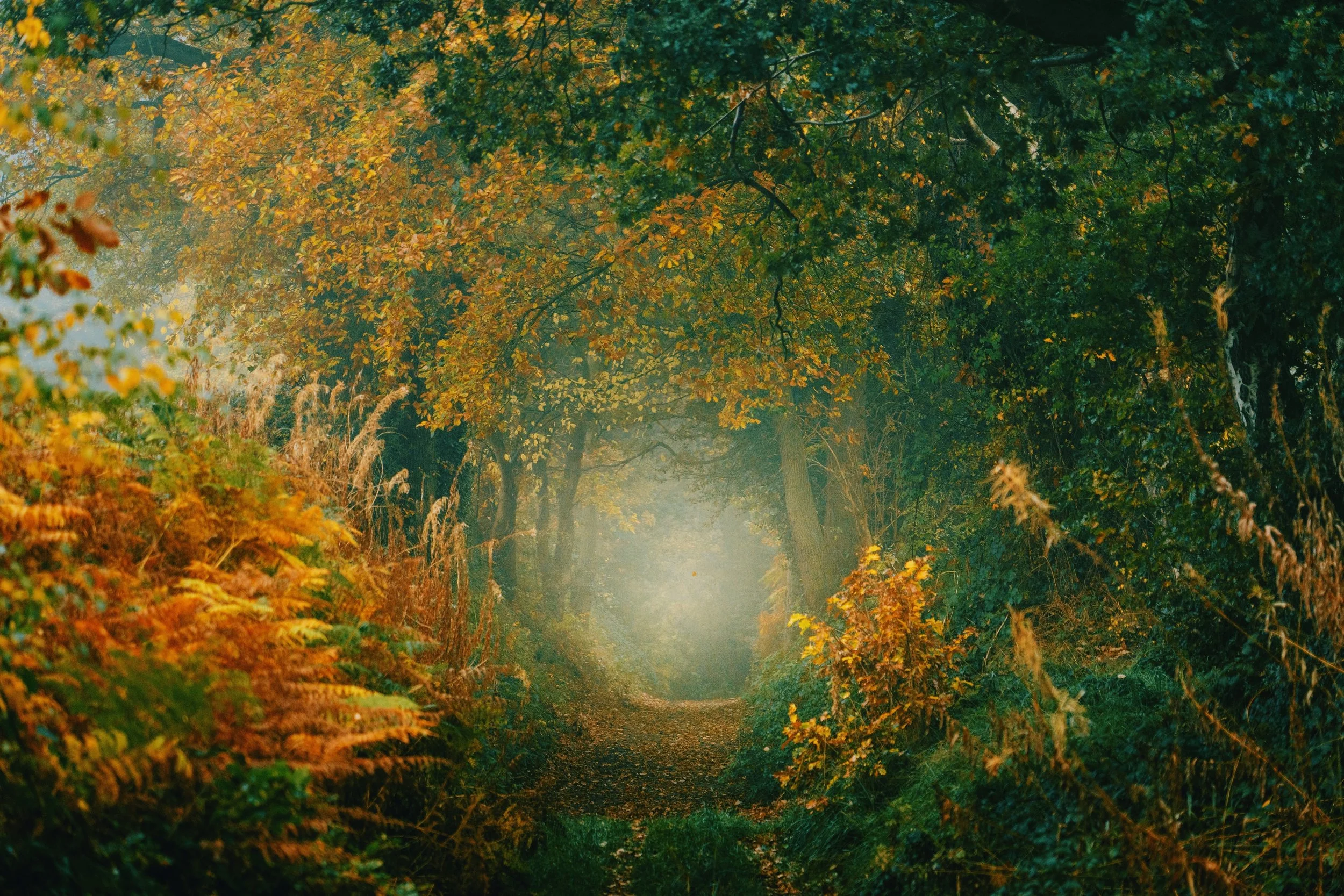
Necessary Secrecy
Sara Kyoungah White
On Refugia & Interlinear Spaces
This essay is featured in Ekstasis Issue 10 Print Edition
The unknown author of Ecclesiastes once wrote that there is a time to be silent and a time to speak. Sometimes, too, there is a time to speak about the silent things.
See me, hear me, notice me—the more the better! cries the world. In its clamoring shadow there is another kind of power whose gossamer threads hold everything together. This power is in all that is left unseen, unheard, and unnoticed. I have glimpsed its veiled face off the edge of the trail, a small hunched figure sketching among the ferns. I have heard it in the apt word spoken in private, sealed with wax and wisdom. I have felt it in the warm darkness when I was held lovingly. I wonder if you, too, have glimpsed and heard and felt it too.
When I was a child, I lived in a small brick rental house in Fairview Park, Ohio. If you step through that house where someone else now lives, you can slide open the back door and walk to the very edge of the backyard. There, a grove of pine trees gives way to a faded path through the woods—woods that were once mine.
I must have been nine years old and my sister five, the first time we ventured into those woods. Small pocketknife in hand, I left the safety of the lawn and tiptoed onto the path holding my sister’s hand, a hush falling around us like a curtain as the outline of the house blurred behind the pines.
There were hidden tulips in patches of sunlight, and a few lingering spots of snow in the shade. We passed overgrown fenced-off areas that might have once been gardens, and a gnarled crabapple tree with a high built-in seat, as if made for a giant. As the brush and overhead growth began to make our journey difficult, we twisted apart green branches that were just awakening from their winter slumber and cut through wild grape vines that dripped with sap. We ran back to get our rakes, brushing aside the wet leaves on the path to reveal black earth mixed with gravel. When we grew tired, we turned around and returned to the house to eat popsicles, then came back again later in the day.
For days we tunneled our way by stages into the woods, following the faint path, until suddenly, we reached the end. We entered an expansive space sheltered by trees, a room with tree trunks and vines for walls and a matted root carpet. We stood in the middle and slowly spun, mouths agape, squinting at the sun sparkling in our eyes through the budding leaf canopy overhead, as though miles from home.
I wonder as I did then, what used to be in that open space? Maybe a house had been there long ago, a log cabin in the woods, and we had discovered its foundations. Maybe it was an eccentric previous owner’s outdoor oasis, replete with wicker egg chairs and a butler who would crouch through the bush tunnel bearing a golden tray of mimosas. Maybe it was a secret society’s place of séance, velvet-hooded figures huddled around a fire at night in a backyard wood of suburban Cleveland.
All I know is that sometimes even today, I run on this path in my dreams. And if I ever doubted the identity of my sister, this is the question I would ask her: What was at the end of the path in our secret wood?
Now you, too, can guess the answer.
*
I later learned the word to describe those childhood woods of mine, where I would so often run in times of stress or sorrow: refugia. It seems the path in my secret woods led to the edges of the world.
Refugia are “places of shelter where life endures in times of crisis,” writes professor Debra Rienstra in her book Refugia Faith. “Ideally, these refugia endure, expand, and connect so that new life emerges.” Refugia are what restored the apocalyptic mountainsides of Mount Saint Helens in the decades following its eruption, small hidden places sheltering life in time of calamity to later nurture the landscape back to health, the secret of the phoenix’s cells set at ecological scale. Today, environmental scientists are considering refugia in various landscapes as one possibility for fending off the impending devastations of climate change.
Rienstra is attuned to the fact that our connection to the created world and our present environmental crisis is not just economic, scientific, or political—it is deeply spiritual and emotional. She writes of Australian environmental studies professor Glenn A. Albrecht, who invented wonderful words like psychoterratic, which describes what you feel when “you turn off an exit on the highway toward your home neighborhood or walk through a sun-warmed wildflower meadow.” It conveys the full, ineffable spectrum of psychological responses we have to a place.
There’s also Albrecht’s word solastalgia, a mash-up of the Latin words for solace and pain. It’s a “‘melancholia or homesickness’ for the way a place used to be,” “what you feel when you visit Grandpa’s voluptuous garden, formerly kaleidoscopic with vegetables and flowers, now neglected by the next homeowner and nothing but thistles and garlic mustard.”
What strikes me is how words like these come out of the most secret of places to reverberate in every private heart. I may never have turned off onto your particular exit or seen your Grandpa’s garden, but I can guess how your psychoterratic response feels, can trace my own hand along your solastalgia. You may never have walked the paths of my childhood woods, but I suspect that when you close your eyes and stand beside me, you too can almost hear the bird songs and the rustle of wind in the branches overhead.
Each memory is a refugia, protected by our necessary secrecies. It is where our lives endure. And to whisper them aloud is to expand, one refugia brushing against another, until in our telling and our living we find the charred landscape has begun to bloom.
*
In 2012, garden designer Jihae Hwang won the gold medal at London’s Chelsea Flower Show for her entry, “Quiet Time: DMZ Forbidden Garden” based on the landscape of the demilitarized zone (DMZ) between North and South Korea, in honor of the 60th anniversary of the Korean War.
Spanning 155 miles and 2.5 miles wide, the DMZ is one of the most heavily guarded borders in the world. The two countries on either side of it were one kingdom for thousands of years until, seventy years ago, they were suddenly not.
A curious thing has happened as a result of this war. The space between the two countries has become the unintended refuge of rare native Korean plants and endangered animals, flourishing in the absence of humankind. Remote cameras discreetly capture elusive creatures seldom seen in other parts of the peninsula, like the wildcat, yellow-throated martens, and black bear. Some even believe that tigers, once common throughout Korea, may still be roaming through these interlinear forests.
The wild gardens of the DMZ have become a time capsule and an alternate reality, revealing a time before imperialist countries tore apart the Korean peninsula, while simultaneously bearing the imprints of devastating war. In her own design for the Chelsea Flower Show, Hwang planted varieties of the native plants that thrive in the DMZ space, including mugwort and creeping thistle, which were used during battles to help stop bleeding. She planted winter daphnes and lilacs and paved the path with buttons to honor the soldiers who died. The centerpiece of her design is a guard tower, which echoes other traces of combat scattered throughout, such as bullet casings, a helmet, hunks of rusting metal, and bottles hanging on a barbed wire fence containing real letters between families separated by the war. To wander through her garden is to walk through a metaphor for healing and lament, a haunting of death and life.
Scientists are among the few who are allowed to enter the real DMZ space that inspired Hwang’s garden. “Have you wondered what the Han River, which now cuts through the heart of Seoul, might have looked like in its natural state 100 years ago?” asks one expert adviser at Green Korea United. “You can see it at the DMZ, through the natural river banks and streams that are there.”
Garden designers, it seems, are also allowed. After visiting the DMZ space in 2002, Hwang described it as “a garden that is more pure, more transparent and untouched than anywhere else in the world.”
But I am not a scientist or a garden designer—my thumb is black with ink. I can only see this garden of the past dimly through the portal of my computer screen, and in the paths that wind through the forests in my dreams.
When I think of Jihae Hwang’s DMZ garden with its button-strewn paths, and the near-mythical refugia lands of the DMZ where tigers may still walk, I feel both psychoterratic and solastalgic for a place I have never set foot in or seen, but carry in my bones as the descendent of a Korean War refugee.
I think of the DMZ space as a protective incubator for indigenous Korean plants and animals. I envision it as an ark swaying in the tides of war, waiting for the floods to subside and for the doors to be thrown open.
And yet I also want the doors to stay safely closed. History has proven time and time again that to open them would mean nature’s demise. Do I want the conflict to end, but at the cost of this secret, transportive place?
I cannot tell if the gardens I yearn for are in the past or in the future, in reality or only in dreams.
*
Each month, there is one kind of email I value and read the most consistently, but am not permitted to share: the missionary prayer letters of my friends and family, sent from countries with severe security concerns to a handful of supporters.
In a recent monthly newsletter, I scroll past a bolded text box warning me not to forward this email to anyone. I click on a password-protected link that takes me to a video.
It’s of the North Korean countryside, one of the most difficult places in the world to be a Christian today. The video is understated and quietly hopeful—the sound of footsteps crunching in a harvested field, bright red kimchi being mixed by hand, a clay pot steaming on a stove. The narrator has the quaint northern lilt to her accent, and she speaks in a smooth percussiveness that mimics the sparse and wistful piano accompaniment in the background. Pray for the harvest, says the newsletter, in this place where gardens are not idealistic metaphors or retirement hobbies, but the very backbone of necessary sustenance.
Who are the people who filmed this video, edited and produced it, wrote it? Who else is reading and watching it? I may never know. I am engaging with something that was made with tenderness and distributed in secret, like a smuggled love letter. In the hand of modernity’s magician tricks, wood becomes paper becomes email, and in it I catch the scent of that secret room in the woods, hear the hushed growls of fabled tigers rustle from the underbrush. All these things say, Do not share.
We are glutted with the privilege of knowledge today, clawing in our desire to shout provocative, informative, entertaining things in 280 characters or less. Each time I find myself carried off by the swelling waves of social media with its follower counts and hopes for virality, its solitary swiping and tapping, I think about this monthly email and find myself anchored once again. Every word is a drip of honey on my famished tongue, and prayer becomes concrete. In this day, emails like these are one of the last remaining ways I can encounter the art of writing privately, catch a glimpse of secrecy’s power to shelter and protect that which is most precious.
Missionary letters are another kind of refugia—tiny, tough seeds strewn in eternity’s garden, waiting for the warmth of spring. To be prematurely revealed would be their destruction. Black smoke billows from Mount Saint Helens, but I am led to dance and pray in the slim shadow of a pebble.
*
“There is a fragrance in the air, a certain passage of a song, an old photograph falling out from the pages of a book, the sound of somebody’s voice in the hall that makes your heart leap and fills your eyes with tears,” writes Frederick Buechner in Telling the Truth: The Gospel as Tragedy, Comedy, and Fairy Tale. “Who can say when or how it will be that something easters up out of the dimness to remind us of a time before we were born and after we will die?”
The kingdom of God is the most psychoterratic and solastalgic place I can think of. It is a kingdom that, for now, is built mostly of hidden refugia tucked into unlikely, unseen places. We pass through life, tripping on these pockets of hope where we did not expect them.
I’m puttering in the yard when my young son holds up a handful of tomatoes he has tended all summer. He exclaims, “Aren’t they so red?” and then we feast, party of two. I’m sitting at a café, the crowd thin tonight, where a young musician stands on the small stage, obvious in her nervousness. But there’s a moment where she closes her eyes, presses into the song, and her voice soars, sublime. It’s Sunday again, but this time as the congregation rises for the parting blessing, all of a sudden I feel like I’ve let go of everything I’ve been clutching, like I’ve walked into my parents’ house to sit at the table like a carefree child.
The world is full of sons and musicians, congregations and homes. One summer in Ohio makes for untold thousands of backyard stories like mine, and the Internet is aflutter with the private, hidden messages that whisper that hope can still overflow. Somewhere in the mountains between the two Koreas, otters are splashing freely in a river without boats and a black bear nurses her cubs without fear.
I want to believe that kingdoms heal like bodies do, that the tending of a garden is a prophecy for the future. I want to believe that everything we see today is only a shadow of what will one day be. Now in my remembrance of that mysterious room in the woods, I suspect we may have been closer to home than we had been before. Today I’m sitting in the ashes, but all around me the kingdom of God is being stitched together cell by cell toward the rising of fiery wings.
Sara Kyoungah White
Essayist & Editor
Sara is currently serving as the online copy editor for Christianity Today.
Photography by Daniel Casson
This essay is featured in the newest Ekstasis Print Edition. Enjoy the fullness of what we have to offer and support our work by buying a copy for your coffee table, office space, or reading nook.
